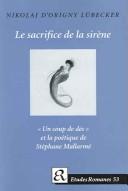| Listing 1 - 6 of 6 |
Sort by
|
Multi
ISBN: 9780748697977 9780748697991 9780748697984 9780748698004 0748697985 9781474412209 1474412203 0748698000 0748697993 0748697977 Year: 2015 Publisher: Edinburgh Edinburgh University Press
Abstract | Keywords | Export | Availability | Bookmark
 Loading...
Loading...Choose an application
- Reference Manager
- EndNote
- RefWorks (Direct export to RefWorks)
An analysis of what contemporary directors seek to attain by putting their spectators in a position of strong discomfort. In recent years some of the best-known European and American art film directors have made films that place the spectator in a position of intense discomfort: Feel-Bad Films . Through analysis of films by directors such as Lars von Trier, Gus Van Sant and Claire Denis, amongst others, this book explores why we are attracted to these unpleasurable viewing experiences, what directors believe they can achieve via the feel-bad experience and how we can situate the films in intellectual history. Key Features: Detailed analyses of the work of some of the best-known contemporary art film directors * stimulating contribution to current debates about the ethics and politics of cinematic spectatorship * The conceptualization of a cinematic genre that will allow us to reconsider debates about the social potential of film
Film --- Europe --- United States --- Motion picture audiences --- Motion picture producers and directors --- Directors, Motion picture --- Film directors --- Film producers --- Filmmakers --- Motion picture directors --- Moviemakers --- Moving-picture producers and directors --- Producers, Motion picture --- Persons --- Psychology --- Psychology. --- United States of America
Book
ISBN: 1800853890 1802070680 Year: 2022 Publisher: Liverpool : Liverpool University Press,
Abstract | Keywords | Export | Availability | Bookmark
 Loading...
Loading...Choose an application
- Reference Manager
- EndNote
- RefWorks (Direct export to RefWorks)
How do the writings of Verlaine, Baudelaire, and Mallarmé speak to our time? Why should we continue to read these poets today? How might a contemporary reading of their poetry differ from readings delivered in previous centuries? Twenty-First-Century Symbolism argues that Verlaine, Baudelaire, and Mallarmé prefigure a view of human subjectivity that is appropriate for our times: we cannot be separated from the worlds in which we live and evolve; human beings both mediate and are mediations of the environments we traverse and that traverse us, whether these are natural, urban, linguistic, or technological environments. The ambition of the book is therefore twofold: on the one hand, it aims to offer new readings of the three poets, demonstrating their continued relevance for contemporary debates, putting them into dialogue with a philosophical corpus that has not yet played a role in the study of nineteenth century French poetry; on the other, the book relies on the three poets to establish an understanding of human subjectivity that is in tune with our twenty-first century concerns.
Charles Baudelaire --- Paul Verlaine --- Stéphane Mallarmé --- human subjectivity --- technological developments --- ecological changes --- contemporary philosophy --- 19th Century Poetry --- Ecopoetry --- Affect --- Non-anthropocentric ontology

ISBN: 8772898259 9788772898254 Year: 2003 Publisher: Copenhague: Museum Tusculanum Press,
Abstract | Keywords | Export | Availability | Bookmark
 Loading...
Loading...Choose an application
- Reference Manager
- EndNote
- RefWorks (Direct export to RefWorks)
Book

ISBN: 9781474470346 1474470343 Year: 2022 Publisher: Edinburgh
Abstract | Keywords | Export | Availability | Bookmark
 Loading...
Loading...Choose an application
- Reference Manager
- EndNote
- RefWorks (Direct export to RefWorks)
Environmentalism in motion pictures --- Ecology in motion pictures --- Benning, James
Book

Year: 2009 Publisher: Kopenhagen Statens Museum for Kunst
Abstract | Keywords | Export | Availability | Bookmark
 Loading...
Loading...Choose an application
- Reference Manager
- EndNote
- RefWorks (Direct export to RefWorks)
Art styles --- Iconography --- Art --- Sculpture --- Painting --- Film --- Theatrical science --- assemblages [sculpture] --- art [discipline] --- drama [discipline] --- painting [image-making] --- motion pictures [visual works] --- eroticism --- sculpting --- Surrealist --- Freddie, Wilhelm --- anno 1900-1999 --- Denmark
Book

ISBN: 0748651225 1283221845 9786613221841 0748647090 9780748647095 9781283221849 9780748641604 0748641602 9780748651221 6613221848 Year: 2022 Publisher: Edinburgh
Abstract | Keywords | Export | Availability | Bookmark
 Loading...
Loading...Choose an application
- Reference Manager
- EndNote
- RefWorks (Direct export to RefWorks)
Explosive images of sex and violence characterise what has come to be known as the 'new extremism' in contemporary European cinema. This collection of essays is devoted to the new extremism in contemporary European cinema and will critically interrogate this highly contentious body of work.
Motion pictures --- Sex in motion pictures. --- Violence in motion pictures. --- Violence in moving-pictures --- Sex in moving-pictures --- Erotic films --- Pornographic films --- History. --- Violence au cinéma --- Cinéma --- History --- Histoire
| Listing 1 - 6 of 6 |
Sort by
|

 Search
Search Feedback
Feedback About UniCat
About UniCat  Help
Help News
News